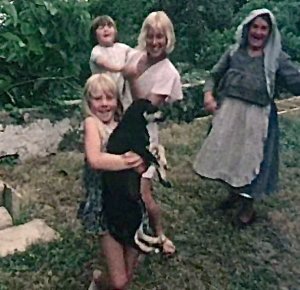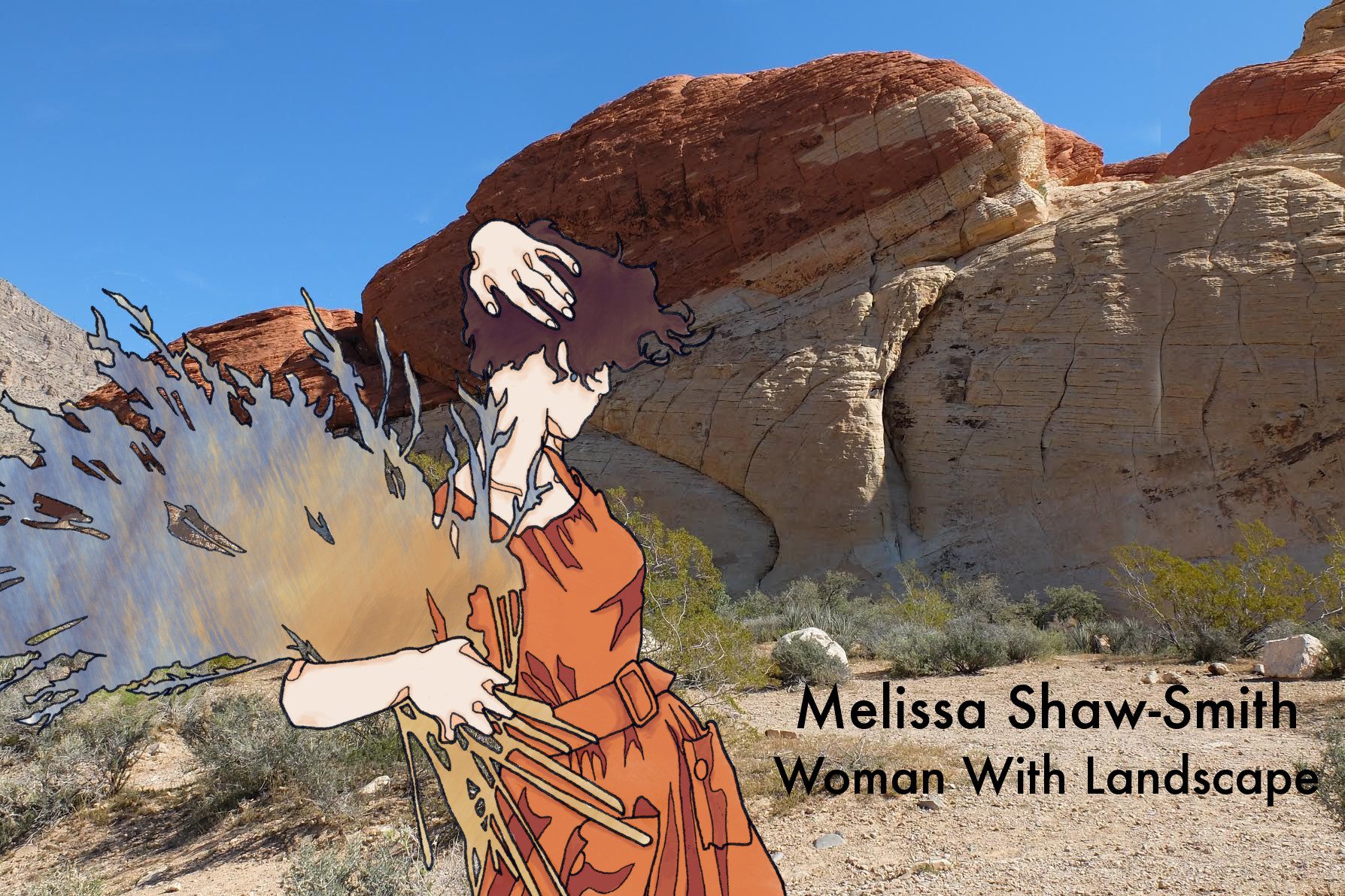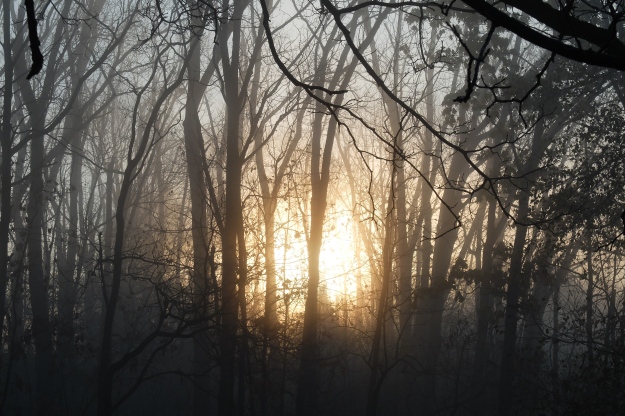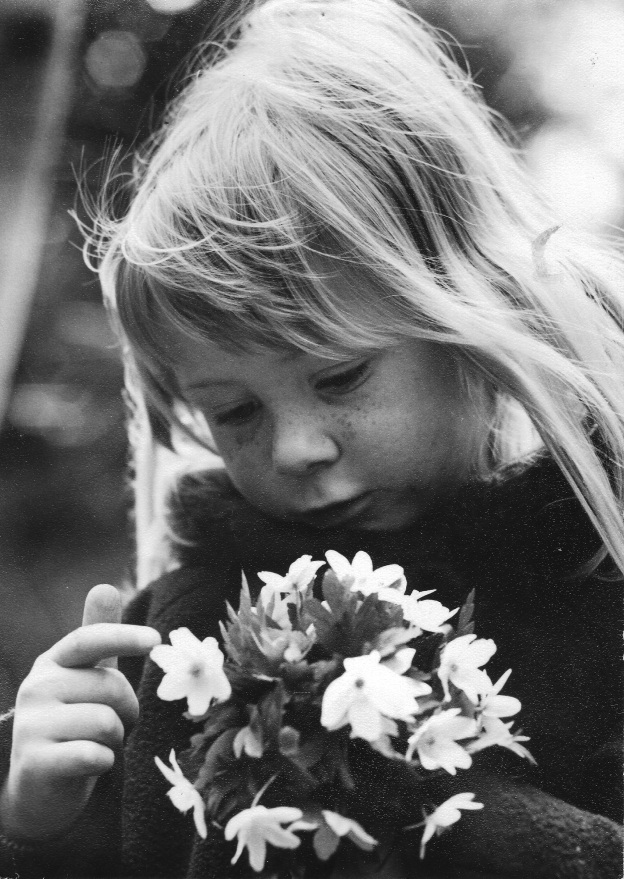
Angeliki putting on her national costume with Katerina & Yaya’s help
In 1973 as a seven-year-old child living the idyllic life on the island of Corfu, I was oblivious to the fact that Greece was in turmoil, writhing under the yoke of the Army Junta (1968-74). My father later informed me that our special invitation to visit the Old Citadel for a feast day celebration, and several other rather bizarre invitations, was so that the secret police could keep tabs on us. I can only imagine that in their eyes, a couple of Irish documentary filmmakers with three small children in tow seemed highly subversive.

On the whole, though, the Corfiots welcomed us with open arms. 
This is how a typical meeting with a stranger would go: Mum and Dad would stop the VW bus on a remote hillside to film a snake Dad had just caught. Out of nowhere, a goat herder or a group of small children would appear. Soon we’d be surrounded by curious faces. And then came the inevitable question. Poú eísai? Where are you from? When we said, Irlandía, initially thrown off by the blonde hair they would say, Ollandía? Ochi, we’d say, No. Irlandía. Their faces would light up in recognition. Their index fingers would go up and invariably they’d go, Boom, boom, boom, imitating the sound of a gun. At the time it was the height of The Troubles in Northern Ireland, with the IRA vehemently resisting the British Government’s occupation, and many in Greece understood that oppression. Immediately, we would become allies. Soon, we learned when asked that question to respond, Irlandía, Boom, boom, boom.
In our village, Junta, or no Junta, people got on with the job of living. And every day there was something new for my sisters and I to marvel at. Traveling trades people often made their way through the narrow streets of Kinopiastes, calling out their services. One of my favorites was the Spoon Man.
 At his familiar cry, doors would open and voices would hail him. He’d stop, open up his bag of tricks on the side of the street and a crowd of housewives would gather, bringing their household cutlery wrapped in their aprons. To a small child, the Spoon Man was better than a magician. Carefully holding a tarnished spoon with a pair of tongs, he’d dip it in a blackened, bubbling pot of sludgy, dull silver-hued liquid. A second later the spoon would emerge, gleaming and winking in the sunlight, it’s silver surface restored to glory.
At his familiar cry, doors would open and voices would hail him. He’d stop, open up his bag of tricks on the side of the street and a crowd of housewives would gather, bringing their household cutlery wrapped in their aprons. To a small child, the Spoon Man was better than a magician. Carefully holding a tarnished spoon with a pair of tongs, he’d dip it in a blackened, bubbling pot of sludgy, dull silver-hued liquid. A second later the spoon would emerge, gleaming and winking in the sunlight, it’s silver surface restored to glory.
Surely this was alchemy—or at least its little sister. 
The traveling peddler, was another of my favorites. Dimitris led his heavily laden donkey, panniers piled high with every imaginable household tool, to our back gate. He’d stop, spread out the choicest selection of combs and headscarves and plastic bowls on a cloth, and wait for customers. Then, sales or no sales, he’d load everything back onto the patient donkey, tie it down securely, and clatter off into the distance, plastic buckets swaying from side to side.
I often wonder how the villagers perceived this Irish family who landed in their midst that spring and summer. They put up with our perpetual curiosity and even seemed to welcome our interest in every aspect of their lives. If my sisters and I ran down to Pappoú’s corner shop to buy a gazoza or some bubble gum, not only would we return with our money still in our pockets, but countless grandmothers sitting on their stoops, or grandfathers flicking worry beads through their fingers would have greeted us. Our friends sought us out, and arm in arm, we paraded around the village until we found some mischief to get into. One day Leni borrowed her mother’s wedding dress and we held an epic Greek wedding in the yard. Another day, Leni and her older sister Angeliki dressed up in their national costumes to give us a show.


The nuns who lived up the hill at the back of the village seemed delighted by our visits. Giggling and chattering away like jackdaws, the young nuns immediately pulled out extra chairs and a big bottle of ouzo and the ubiquitous, sticky kumquat liqueur. Thankfully, this was off limits to kids. But my mother would dutifully take tiny sips of the sickly sweet liqueur. They’d crack walnuts from their trees for us, and offer chunks of nougat.
Occasionally, we did run into a cultural misunderstanding. Since a small boy, my father has hand-raised stray or injured animals, particularly birds. The best pet we ever had was a Jackdaw named Percival that Dad helped us hand-rear after it fell out of it’s nest. We hadn’t been living in Greece long before he acquired a young Little Owl. The plan was to keep it long enough to film it, then release it. During the day it slept in the villa, perched on my father’s tripod. At night, it woke up to eat the live mice we’d caught for it and flutter around the house. One day, we came back from a day of filming and the owl was gone. Later, we found its burnt remains in the alleyway at the back of the house. We learnt that in Greece, old superstitions run deep, and a few people still consider them kakó, or evil. Perhaps this dates back to the ancient Roman belief that owls were harbingers of death, or witches could turn themselves into owls. For most in Greece, though, the owl is seen as a bird of wisdom. In Greek mythology, the owl was the favorite bird of Athene, the Greek Goddess of Wisdom, and appears on early Greek coins.
Sadly our sojourn on Corfu finally came to an end. Gathered around the stone table under the grapevines, we had one last party with the Gardigotti family who had made us feel like we truly belonged. With the record player set in the window, everyone danced around the yard. And one last time we chased fireflies with our new friends. Then it was time to start our long drive home, this time through Macedonia and Yugoslavia, bringing tortoises and olive oil and memories to last a lifetime.

Ygeía sas!

Post script: We did return when I was sixteen, this time, sharing our adventures with my four-year-old brother. Although things had changed, I’m glad to say much of the Greek island magic was still there.



















 fingers for dipping in soft boiled eggs, or for spreading with honey, or munching with a heap of baked beans.
fingers for dipping in soft boiled eggs, or for spreading with honey, or munching with a heap of baked beans.
 parlance) made by the village baker was delicious. My sisters and I would get up early and gallop through the narrow, whitewashed streets to arrive in time to watch the loaves being pulled from the oven on long wooden paddles. The bread never made it home in one piece. On days when we went filming with my parents for the documentaries they made on the island, we would take along a picnic lunch. In a shady olive grove we’d listen to the cicadas zithering, eating chunks of bread doused in green olive oil and topped with sweet tomato slices and slabs of salty feta.
parlance) made by the village baker was delicious. My sisters and I would get up early and gallop through the narrow, whitewashed streets to arrive in time to watch the loaves being pulled from the oven on long wooden paddles. The bread never made it home in one piece. On days when we went filming with my parents for the documentaries they made on the island, we would take along a picnic lunch. In a shady olive grove we’d listen to the cicadas zithering, eating chunks of bread doused in green olive oil and topped with sweet tomato slices and slabs of salty feta. brunch with my family: a crusty loaf of sourdough from the farmer’s market with a homemade soup to dunk it in, jars of hummus and basil pesto from the garden, slices of pungent local cheese, and plates brimming with cucumber and tomato slices and a handful of briny Kalamata olives. Heaven on a plate!
brunch with my family: a crusty loaf of sourdough from the farmer’s market with a homemade soup to dunk it in, jars of hummus and basil pesto from the garden, slices of pungent local cheese, and plates brimming with cucumber and tomato slices and a handful of briny Kalamata olives. Heaven on a plate!










